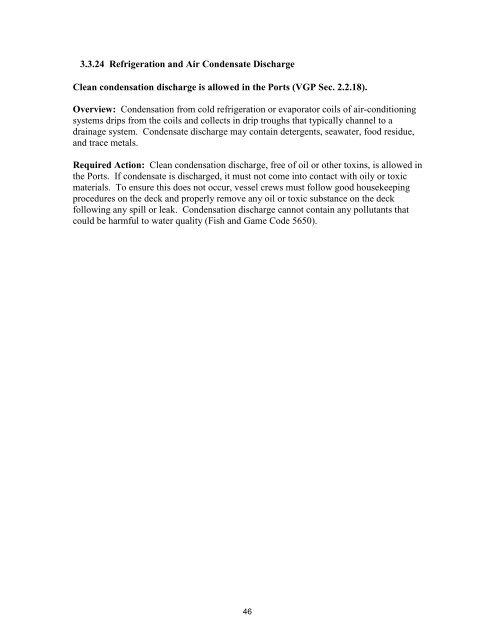Vessel Discharge Rules and Regulations - The Port of Los Angeles
Vessel Discharge Rules and Regulations - The Port of Los Angeles
Vessel Discharge Rules and Regulations - The Port of Los Angeles
You also want an ePaper? Increase the reach of your titles
YUMPU automatically turns print PDFs into web optimized ePapers that Google loves.
3.3.24 Refrigeration <strong>and</strong> Air Condensate <strong>Discharge</strong><br />
Clean condensation discharge is allowed in the <strong>Port</strong>s (VGP Sec. 2.2.18).<br />
Overview: Condensation from cold refrigeration or evaporator coils <strong>of</strong> air-conditioning<br />
systems drips from the coils <strong>and</strong> collects in drip troughs that typically channel to a<br />
drainage system. Condensate discharge may contain detergents, seawater, food residue,<br />
<strong>and</strong> trace metals.<br />
Required Action: Clean condensation discharge, free <strong>of</strong> oil or other toxins, is allowed in<br />
the <strong>Port</strong>s. If condensate is discharged, it must not come into contact with oily or toxic<br />
materials. To ensure this does not occur, vessel crews must follow good housekeeping<br />
procedures on the deck <strong>and</strong> properly remove any oil or toxic substance on the deck<br />
following any spill or leak. Condensation discharge cannot contain any pollutants that<br />
could be harmful to water quality (Fish <strong>and</strong> Game Code 5650).<br />
46

















